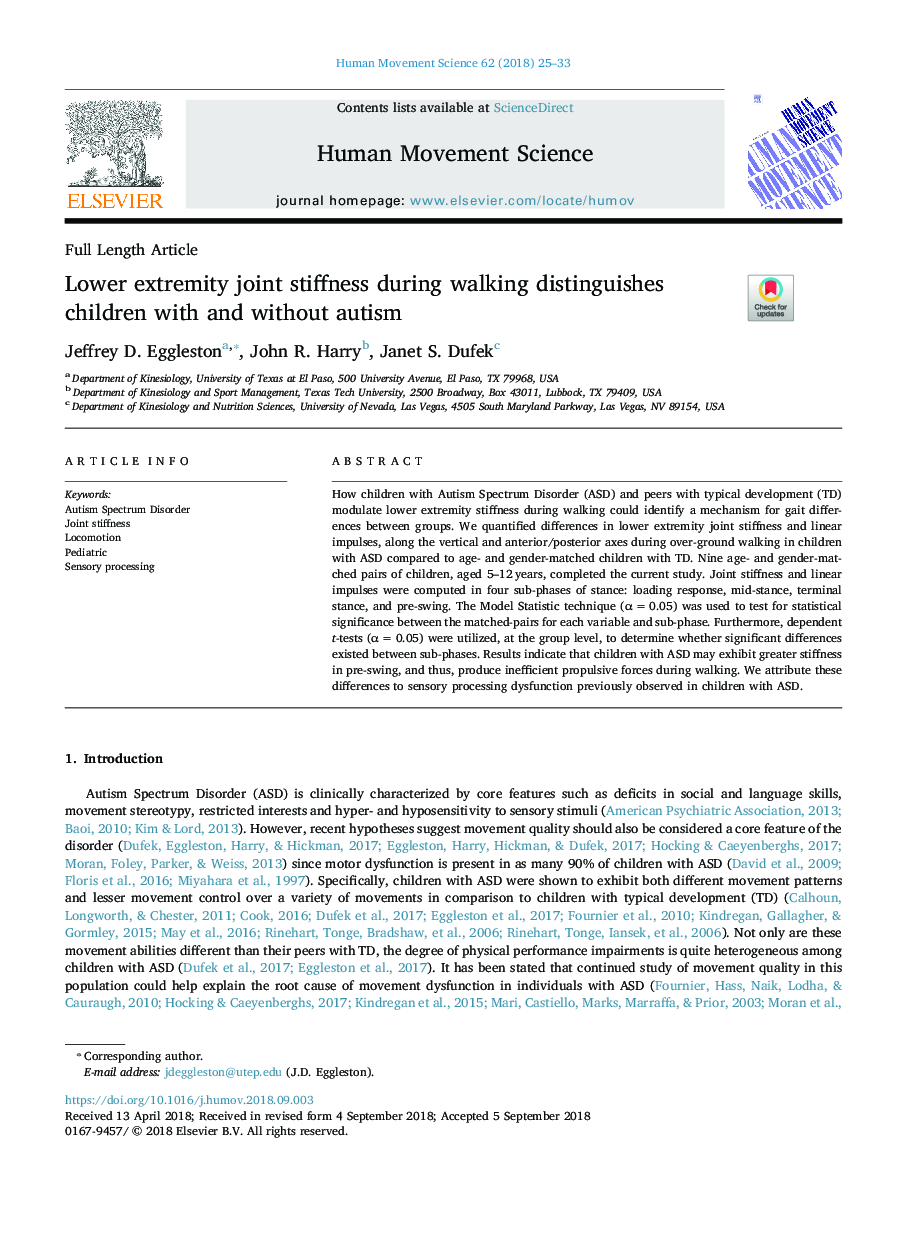| کد مقاله | کد نشریه | سال انتشار | مقاله انگلیسی | نسخه تمام متن |
|---|---|---|---|---|
| 10140366 | 1646013 | 2018 | 9 صفحه PDF | دانلود رایگان |
عنوان انگلیسی مقاله ISI
Lower extremity joint stiffness during walking distinguishes children with and without autism
ترجمه فارسی عنوان
سفتی مفصل مچ پا در طول قدم زدن، کودکان را با اوتیسم و بدون آن تشخیص می دهد
دانلود مقاله + سفارش ترجمه
دانلود مقاله ISI انگلیسی
رایگان برای ایرانیان
کلمات کلیدی
اختلال اسپکتروم اوتیسم، سختی مشترک حرکت اطفال، پردازش حسی،
موضوعات مرتبط
علوم زیستی و بیوفناوری
علم عصب شناسی
علوم اعصاب شناختی
چکیده انگلیسی
How children with Autism Spectrum Disorder (ASD) and peers with typical development (TD) modulate lower extremity stiffness during walking could identify a mechanism for gait differences between groups. We quantified differences in lower extremity joint stiffness and linear impulses, along the vertical and anterior/posterior axes during over-ground walking in children with ASD compared to age- and gender-matched children with TD. Nine age- and gender-matched pairs of children, aged 5-12â¯years, completed the current study. Joint stiffness and linear impulses were computed in four sub-phases of stance: loading response, mid-stance, terminal stance, and pre-swing. The Model Statistic technique (αâ¯=â¯0.05) was used to test for statistical significance between the matched-pairs for each variable and sub-phase. Furthermore, dependent t-tests (αâ¯=â¯0.05) were utilized, at the group level, to determine whether significant differences existed between sub-phases. Results indicate that children with ASD may exhibit greater stiffness in pre-swing, and thus, produce inefficient propulsive forces during walking. We attribute these differences to sensory processing dysfunction previously observed in children with ASD.
ناشر
Database: Elsevier - ScienceDirect (ساینس دایرکت)
Journal: Human Movement Science - Volume 62, December 2018, Pages 25-33
Journal: Human Movement Science - Volume 62, December 2018, Pages 25-33
نویسندگان
Jeffrey D. Eggleston, John R. Harry, Janet S. Dufek,
